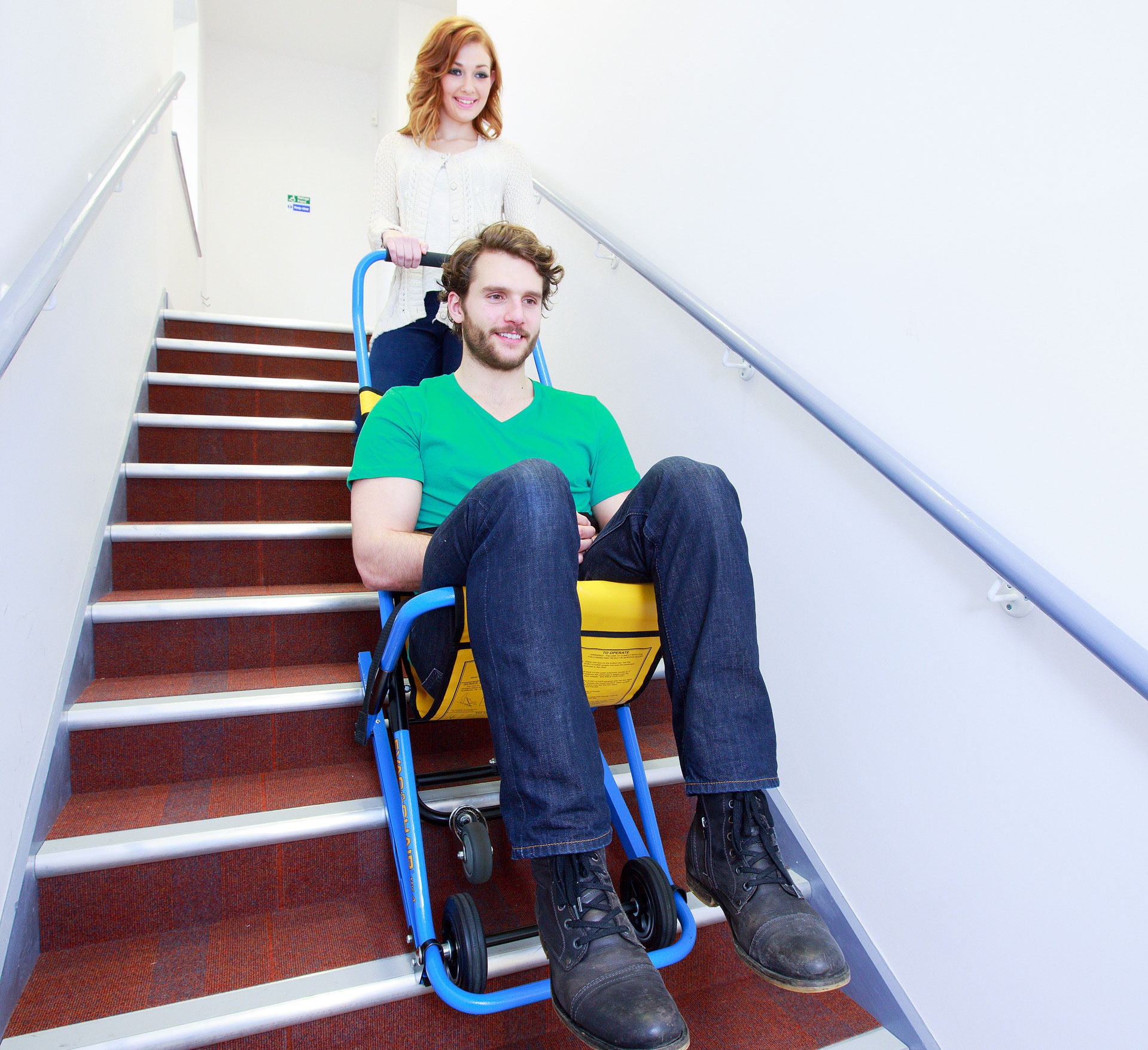WHAT MAKES EVAC+CHAIR CANADA BETTER?
THE ORIGINAL EVACUATION CHAIR SINCE 1982

WHY EVAC+CHAIR?
The EVAC+CHAIR® is the original Emergency Evacuation Staircase Chair. There are plenty of copycat competitors, but as usual, the original is still the best. Here’s why:
The EVAC+CHAIR® CANADA evacuation chair is simple. It works every time. It is intuitive so anyone can use it, even without training or instruction. There are no complicated add-ons to break. No gimmicky features to snag or fail. It simply works, effectively, easily, and does what it was designed to do: save lives.
Benefits of the Evac+Chair
Preparation of the chair for operational use should be fast and simple. Tricky release mechanisms should not be waiting to trap the operator’s finger or hand, nor should the operator be expected to balance the chair with one hand whilst releasing skids, buckles or straps when the chair is occupied.
Weight is a major factor, particularly if the evacuation equipment is located in various parts of the building and must be carried to the passenger, or simply removed from its securing location.
Weight to strength ratio of the product is an important consideration, particularly with an upward trend in BMI (body mass index) throughout the population.
The device must be designed to facilitate ease of transfer. PRM (person of reduced mobility) may require assistance and the product must be stable, open on both sides and provide passenger safety at all times.
Ideally, where a wheelchair transfer takes place, both the wheelchair and evacuation chair should be of equal height and supported by an operator for extra stability.
A good turning circle is required and no extra physical exertion should be needed to get around difficult landings and corners.
An evacuation chair should be able to match this with a competent operator. The Evac+Chair® can comfortably achieve two flights of stairs in 15 seconds, or four floors in a minute, without blocking the stairs for other users.
The majority of evacuation chairs depend on a rotating belt drive mechanism to span two or more stair nosings. The concept was first invented by David Egen who designed and registered the Egen Polymatic v-belt as a friction braking device.
Using coefficient of friction the greater the weight of the passenger the greater is the friction. This friction is increased by adding leverage to the operator handle. We have found several chair types which have no friction and therefore no controlled speed of descent. Other devices require a cable brake and release mechanism.
Virtually all cable brake mechanisms use the “dead man brake” principle and are either “on” or “off” and do not provide a graduated increase or decrease of pressure experienced with, say, a bicycle.


